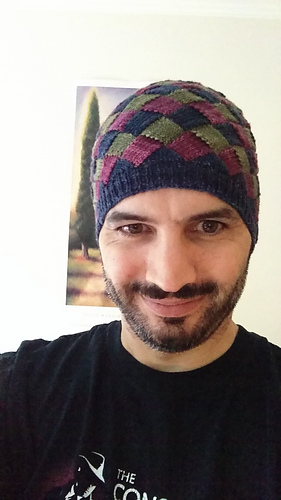patterns >  Carol Wells' Ravelry Store
Carol Wells' Ravelry Store
> Checkered Chess Champ Entrelac Hat




























Checkered Chess Champ Entrelac Hat
Three sizes, two different profile shapes, and two different color options allow you to customize this hat to suit just about anyone—including your favorite chess champion.
For simplicity, the hat is worked in the round in variegated yarn for the easiest option. Knitting in the round with entrelac gives a perfectly seamless, beautiful finished hat with no hints of transitions at the beginning of rounds whatsoever, unlike results that you sometimes get with Fair-isle knitting in the round.
I also include instructions for using two contrasting colors in the round with only two extra steps needed between rounds to keep yarn continuous, so that there will be only a couple of yarn ends to weave in for finishing—this was my wonderful discovery with this project—a helpful, useful innovation for the entrelac method!
Basically in entrelac knitting, you will be knitting layers of squares rather than rows to achieve the basket weave-like effect in texture. Knitting in the round is actually easier in some ways for entrelac than flat knitting since you will not need to create triangle shapes at the edges. Using two colors requires only some extra slipping of stitches and one extra pick-up row on the first square of a layer—well worth it to avoid the tedious weaving in task for completion.
There are on-line tutorials demonstrating the entrelac stitch, but I haven’t seen anything published or posted yet for switching colors in the round, so I have included detailed instructions with a photo to help illustrate this technique. Once you understand the idea, it is easy.
There are also some general entrelac knitting tips at the end of this pattern.
I knit with two circular needles as invented by Cat Bordhi several years ago. The Magic Loop method or double pointed needles will work equally well.
57329 projects
stashed
56092 times
134950 projects
stashed
148659 times
2480 projects
stashed
2518 times
- First published: October 2013
- Page created: October 5, 2013
- Last updated: March 22, 2025 …
- visits in the last 24 hours
- visitors right now




